Consuming too much energy – whether from fat or carbohydrates, including sugar – will make you gain weight. If left unchecked, this excess weight increases your risk of lifestyle-related diseases such as diabetes, heart disease and some cancers.
In recognition of this, the World Health Organisation (WHO) recommends adults and children limit their intake of “free sugars” to less than 10% of their total energy intake. Below 5% is even better and carries additional health benefits.
Free sugars refer to monosaccharides (such as glucose) and disaccharides (sucrose or table sugar) added to foods and drinks by the manufacturer, cook or consumer. It also refers to sugars naturally present in honey, syrups, fruit juices and fruit juice concentrates.
Free sugars are different from sugars found in whole fresh fruits and vegetables. There is no scientific evidence that consuming these sugars leads to health problems. So the guidelines don’t apply to fresh fruit and vegetables.
If you’re an average-sized adult eating and drinking enough to maintain a healthy body weight (roughly 8,700 kilojoules per day), 10% of your total energy intake from free sugar roughly translates to no more than 54 grams, or around 12 teaspoons, per day.
But more than half of Australians (52%) usually exceed the WHO recommendations.
Most sugar we eat (around 75%) comes from processed and pre-packaged foods and drinks. The rest we add to tea, coffee and cereal, and other foods we cook.
Sugary drinks account for the largest proportion of Australians’ free sugar intake. A single can or 600ml bottle of soft drink can easily exceed the WHO recommendation, providing around 40-70g sugar. One teaspoon equates to 4.5g white sugar, so soft drinks range from 8.5 to 15.5 teaspoons.
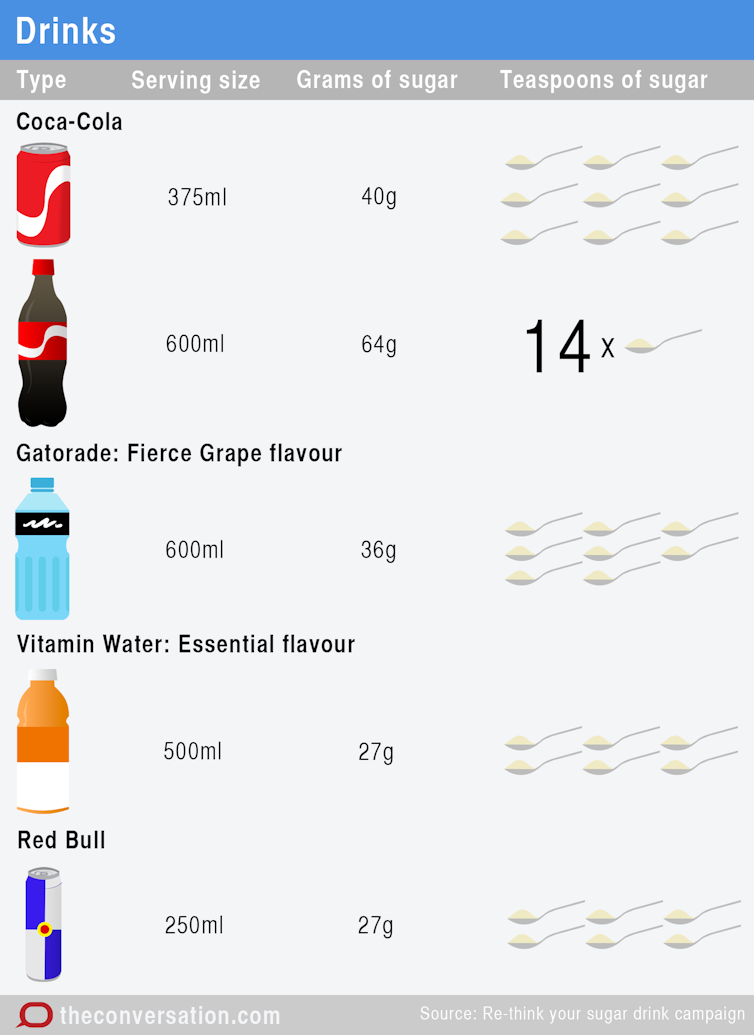
More insidious sources of sugar are drinks marketed as “healthier” options, such as iced teas, coconut water, juices and smoothies. Some medium-sized smoothies have up to 14 teaspoons of sugar (63.5g) in a 475ml drink.
Flavoured milks are also high in free sugars (11 teaspoons in a 500ml carton) but can be a good source of calcium.
Other foods high in sugar are breakfast cereals. While some sugar is derived from dried fruit, many popular granola mixes add various forms of sugar. Sugar content for one cup of cereal ranges from 12.5g for creamy honey quick oats to 20.5g for granola. A cup of some types of cereal can contain 30% to 50% of your daily free sugar allowance.
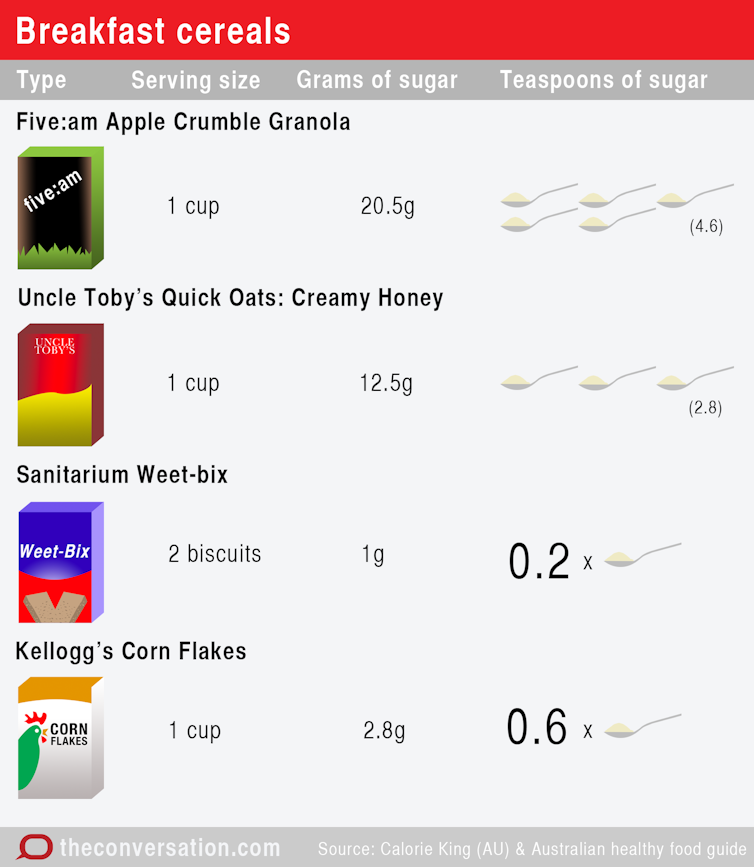
A surprise for many is the added sugars in savoury foods including sauces and condiments. Tomato and barbecue sauce, salad dressing and sweet'n'sour stirfry sauces contain one to two teaspoons of sugar in each tablespoon (20ml).
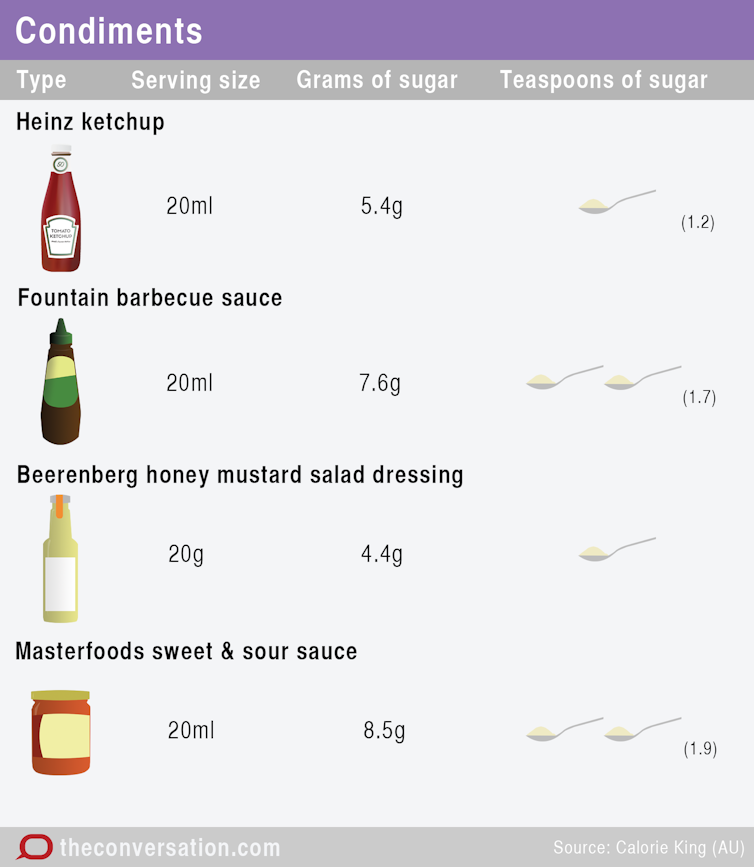
Popular “health foods” and sugar-free recipes can be particularly misleading as they can contain as much sugar as their sweet alternatives. Usually this is referring to “sucrose-free” (what we know as white sugar) and doesn’t exclude the use of other sugar derivatives such as rice malt syrup, agave or maple syrup, typical of popular sugar-free recipes. These are still forms of sugar and contribute to energy intake and unhealthy weight gain when consumed in excess.
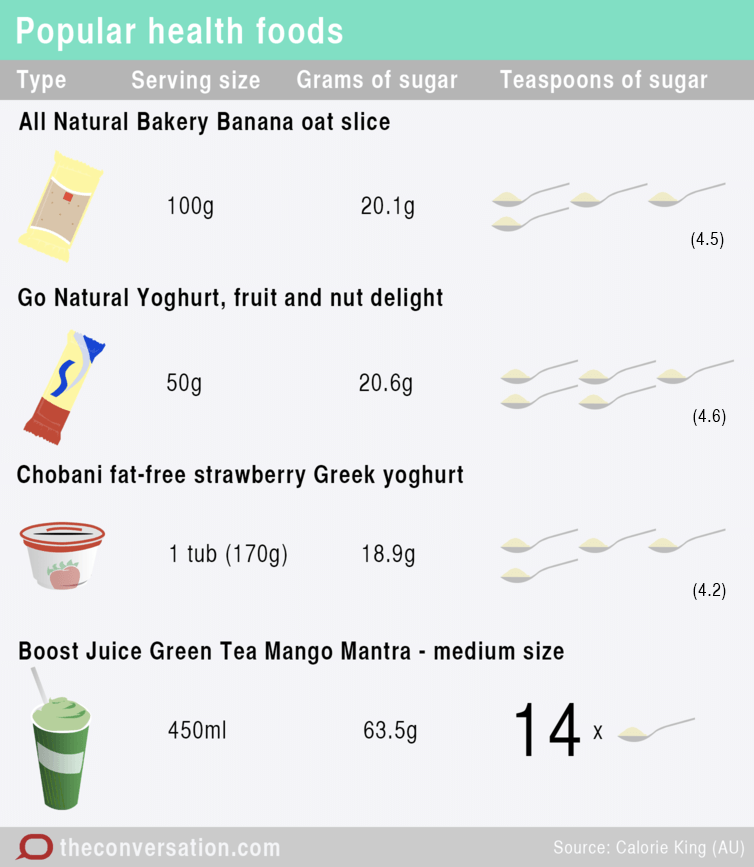
We know treats such as chocolate, pastries and ice-cream do contain sugar, but just how much might surprise you. A chocolate-coated icecream will contribute five teaspoons of sugar, or almost half the daily limit.
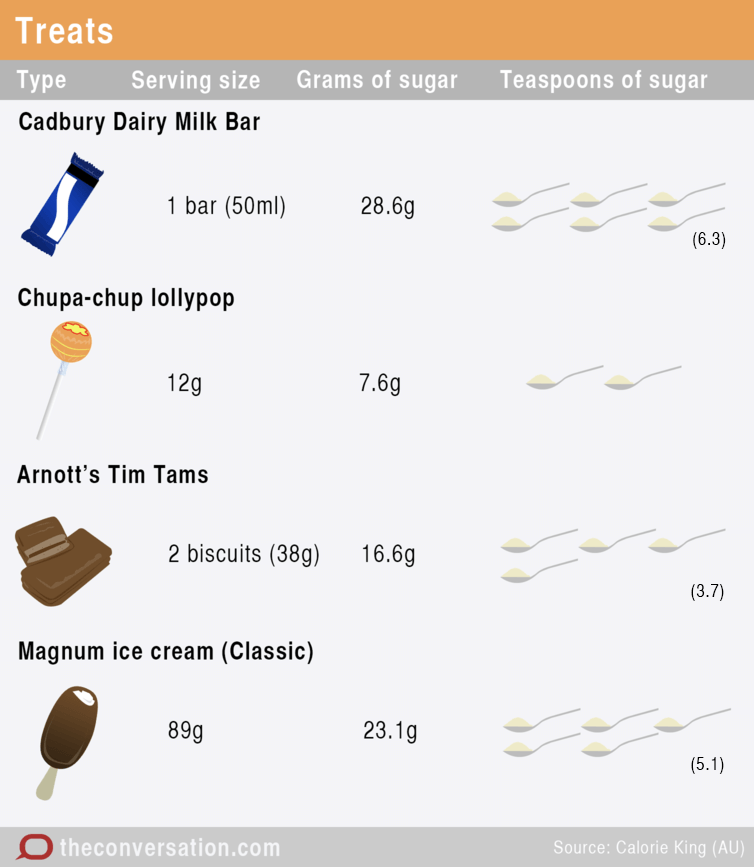
Sugar added to foods and drink can have different names depending on where it comes from. When reading labels, alternative names for sugar include:
- sucrose
- glucose
- corn syrup
- maltose
- dextrose
- raw sugar
- cane sugar
- malt extract
- fruit juice concentrate
- molasses.
The main ingredient is sugar if any of these are listed as the first three ingredients.
Note that products with “no added sugar” nutrition claims may still contain high levels of natural sugars, also considered as free sugars. A good example of this is fruit juice: the sugar content of 200ml of sweetened orange juice (21g) is 7g higher than unsweetened juice (14g).
So how can you cut down on your added sugars?
First, eat fewer foods with free sugars. Reduce your intake of sweets such as chocolate and lollies, cakes, biscuits, sugar-sweetened soft drinks, cordials, fruit drinks, vitamin waters and sports drinks.
Second, make some swaps. Swap your cereal for a lower-sugar variety and limit the amount of sugar you add. Drink plain tap water and swap brands for sugar-free or those with lower added sugar. Swap fruit juices for whole fruits, which also give you fibre and other health-promoting nutrients.
Finally, read the labels on packaged food and drink. If the product has more than 15g of sugar per 100g, check to see if sugar is one of the main ingredients. If it is, use the nutrient information panel to compare and choose products containing less sugar.

